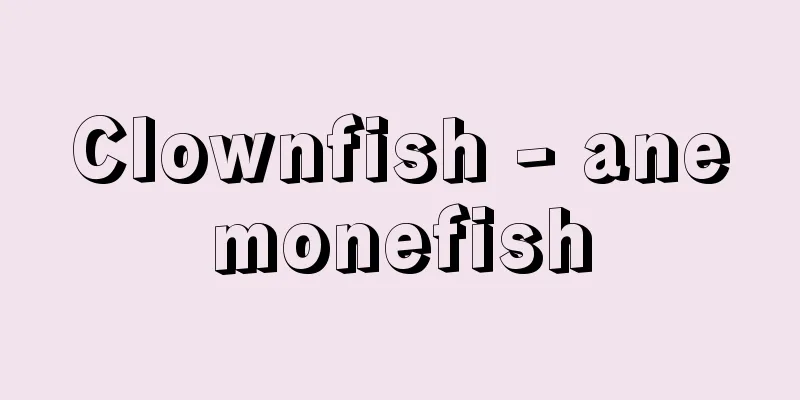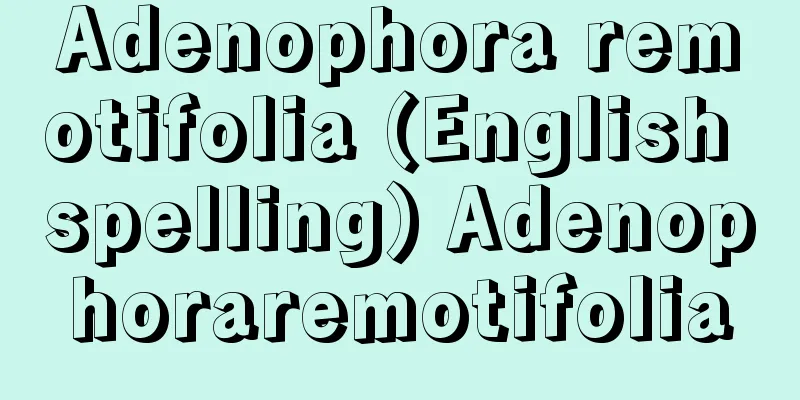Clownfish - anemonefish

|
A general term for marine fish of the family Pomacentridae in the order Perciformes of the class Osteichthyes and the genus Anemonefish. Its English name is Anemonefish. It is widely distributed in the Pacific Ocean and the Indian Ocean south of Chiba Prefecture. Its body is egg-shaped, and it is distinguished from other fish of the Pomacentridae by having fine scales with more than 50 in a vertical row, and by having conical teeth arranged in a single row. It lives symbiotically with large clownfish sea anemones, forming a female-dominated group consisting of one large dominant female, two to three medium-sized males, and several juveniles. When the females disappear, the most dominant male changes sex and becomes the boss. In summer, they clean the rocks near the sea anemone about once every two weeks and lay 200 to 300 oval-shaped eggs. The parents constantly send fresh water with their fins and remove dead eggs. The eggs hatch at night a few days later, and the larvae disperse through a floating period of several days or more, and then orient themselves in the clownfish anemone. Individuals that do not connect with the clownfish anemone for a long period of time are preyed upon by the clownfish anemone. There are six species of clownfish in the Ryukyu Islands of Japan, including this one, all of which live in symbiosis with large sea anemones and are distinguished from one another by their unique swimming patterns and markings. Of the clownfish genus, the Japanese name for the clownfish is the most widespread, living furthest north. The symbiotic partner varies depending on the species; for example, clownfish usually live with banded sea anemones, sea anemones with Tamaitadaki sea anemones, red anemones with sandy-bottom sea anemones, and pink anemones with sandy sea anemones. They are popular as ornamental fish because they are relatively easy to raise. They are not edible. [Ida Sai] Source: Shogakukan Encyclopedia Nipponica About Encyclopedia Nipponica Information | Legend |
|
硬骨魚綱スズキ目スズメダイ科の海水魚およびクマノミ属の総称。英名はアネモネフィッシュ。千葉県以南の太平洋、インド洋に広く分布。体は卵形で、ほかのスズメダイ科の魚類とは、鱗(うろこ)が細かく1縦列に50枚以上あること、歯が円錐(えんすい)状で1列に並ぶことなどで区別される。大形のクマノミイソギンチャクと共生し、1尾の大きな優位な雌、2~3尾の中形の雄、数尾の幼魚からなる雌中心の集団をつくる。雌がいなくなると、雄のうち最優位の個体が性転換をしてボスとなる。夏に2週間に一度くらいの頻度でイソギンチャクの近くの岩を掃除し、200~300個の楕円(だえん)形の卵を産み付ける。親はつねにひれで新鮮な水を送り、また死卵を取り除く。卵は数日後の夜に孵化(ふか)し、仔魚(しぎょ)は数日以上の浮遊期を通じ分散し、その後クマノミイソギンチャクに定位する。クマノミイソギンチャクと長期間接しなかった個体は、クマノミイソギンチャクに捕食されてしまう。 日本には南西諸島に本種を含め6種のクマノミ類がいるが、いずれも大形イソギンチャクと共生し、特異な泳ぎ方と斑紋(はんもん)で互いに区別される。クマノミ属のうち和名クマノミが分布が広く、もっとも北方にまで生息する。普通カクレクマノミがハタゴイソギンチャクを、ハマクマノミがタマイタダキイソギンチャクを、トウアカクマノミが砂底のイソギンチャクを、ハナビラクマノミがシライトイソギンチャクを、というように共生する相手は種によって異なる。飼育が比較的容易なので観賞魚として親しまれている。食用とはしない。 [井田 齋] 出典 小学館 日本大百科全書(ニッポニカ)日本大百科全書(ニッポニカ)について 情報 | 凡例 |
<<: Pilgrimage to Kumano - Kumano-mude
>>: Kumano Mandala - Kumano Mandala
Recommend
Ichikawa stop - Ichikawa stop
...After this, in 1924, Hagiwara Masaga invented ...
Bonin Islands
...area: 106.1 km2. The three islands of Mukojima...
Volksschule (English spelling)
Elementary schools in Germany and Austria. A gener...
Shalmaneser III (English spelling)
…But this king did not dare to launch a large-sca...
dental hominid
...Therefore, their diet was similar, and they li...
Yoshihisa Kamo
1171-1223 A Shinto priest in the Kamakura period....
Emergency medical center
A medical institution that provides advanced medi...
Dichotomous sympodium
…When one branch of a bifurcation becomes stronge...
Shiba shrimp (shiba ebi) - Shiba ebi (English spelling) Metapenaeus joyneri
A shrimp of the family Penaeidae that lives near t...
eutectic mixture
A mixture of two or more crystals that precipitat...
Iguchi [village] - Inokuchi
A village in Higashitonami County in the southwest...
Romanov Dynasty
The name of the dynasty that ruled Russia from 161...
Sha Wujing (English: Sha Wujing)
The name of a monster that appears in the Chinese ...
AS resin - AS resin
...ABS resin is made by polymerizing acrylonitril...
Naohide Yatsu
Zoologist. Born in Tokyo. After graduating from t...









